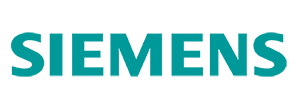EMEA Summit 2015 – Programmes of the Year Winner: Siemens
- Data protection, privacy regulation and governance are critical for all B2B organizations
- Siemens built a standardized process based on consistent legal interpretation rather than assumptions
- Adopting an approach to market communication built around permission-based policies, organizations can ensure compliance
With a worldwide workforce of approximately 263,000 employees and annual revenues in 2014 of more than €72 billion, Siemens is one of the world’s best-known industrial conglomerates. The company operates nine separate divisions and offers solutions for various segments, such as power, energy and building technologies, to name just a few.
 Across the globe, country legislators are enacting laws that promote the efficient use and acceptance of electronic communication by regulating conduct that discourages the use of electronic means to carry out commercial activities.
Across the globe, country legislators are enacting laws that promote the efficient use and acceptance of electronic communication by regulating conduct that discourages the use of electronic means to carry out commercial activities.
These laws have affected – and will continue to affect – traditional marketing practices. Data protection, privacy regulation and governance are critical for all B2B organizations. The Siemens marketing team needed to introduce a compliant, consistent company-wide data capture process for new marketing contacts to drive its marketing programs.
Challenges: Upon further review, it became clear that the 40 business units spread across the nine divisions had implemented disparate capture procedures. Each unit had recourse to different legal opinions and used wording on its multiple Web pages that did not allow other units to use the captured names and deployed different marketing technology systems. Moreover, capture processes were often not effectively documented, and audit trails were not in place.
Solution: Siemens built a standardized process based on consistent legal interpretation rather than assumptions. The solution covered the capture, storage and maintenance of an individual’s cookie consent, marketing email opt-in and profiling permission. A compliance matrix was built within the company’s marketing automation platform that mapped all possible combinations of opt-in, confirmed opt-in and consent options that could potentially be required. Country names were then assigned to the appropriate consent combination. Organizing the data this way allowed for contacts to be placed within an appropriate “bucket” rather than forcing the organization to maintain a country-by-country process flow. Moreover, flexibility was built in, avoiding the need for all countries to adopt the required capture process for the strictest jurisdiction.
The permission status needed to be seen as an integral part of the contact data record, and time and money were spent in several areas to make this a reality. Web capture forms were reworded with approved text. Standard marketing tools needed to support compliant cookie consent capture, and thus, investment, were made in specific widgets to overcome this issue. Data enrichment was further applied to captured contacts.
Naturally, a contact’s permission can be gathered from other sources than simply Web properties. To this end, the Siemens team introduced far-reaching changes for the capture of an individual’s record at a trade show. A revamped physical data capture form, with appropriate wording, was developed and additionally made available for tablet usage. The form promoted the compliant capture of a contact’s consent, but also importantly, drove the “at-event” employee to enter into a meaningful conversation with the visitor, thereby gaining more contextual information to benefit to the receiving sales function. It was determined that it was permissible that a contact who was spoken to at a trade show and whose details were captured via this verbal method of opt-in to be contacted by email and asked to confirm his or her acceptance of the consent given at the event.
Critical success factors: Treating data privacy as a global issue, having senior executive sponsorship and gaining agreement and alignment between the marketing and legal teams were all crucial. With the full engagement of the chief data officer and legal office, marketing goals, legal objections and workable procedures were worked through to allow the organization to arrive at a compliant process capable of supporting marketing objectives. By reviewing and optimizing the multiple sources from which contact permissions could be gathered, the team built a robust, flexible and technically secure environment. Web forms, trade show forms and select third-party Web sites were all updated and utilized.
Impact: To date, the adoption of common processes has been widespread across the company and continues to expand. Six of the nine divisions now use the same physical event contact capture form. Nearly 100 percent of all leads forwarded to sales contain the contact opt-in. Importantly, while the number of leads being passed to sales has reduced, the lead quality and follow-up by sales has increased to a dramatic 90 percent as a direct result of the additional care and contextual information provided from the event floor.
Web form data capture of cookie consent, email opt-in, and profiling permission and complaint storage are now part of the company’s DNA. More than 70 percent of new form fills for prospects are gathered using the new standard.
The lines defining what constitutes personal privacy are constantly being re-drawn. Shifting culturally acceptable norms, extending regulation, challenges to existing and proposed legislation, and the degree of law enforcement mean this trend is likely to continue. By adopting an approach to market communication built around permission-based policies, organizations such as Siemens can ensure that current and continued compliance.
